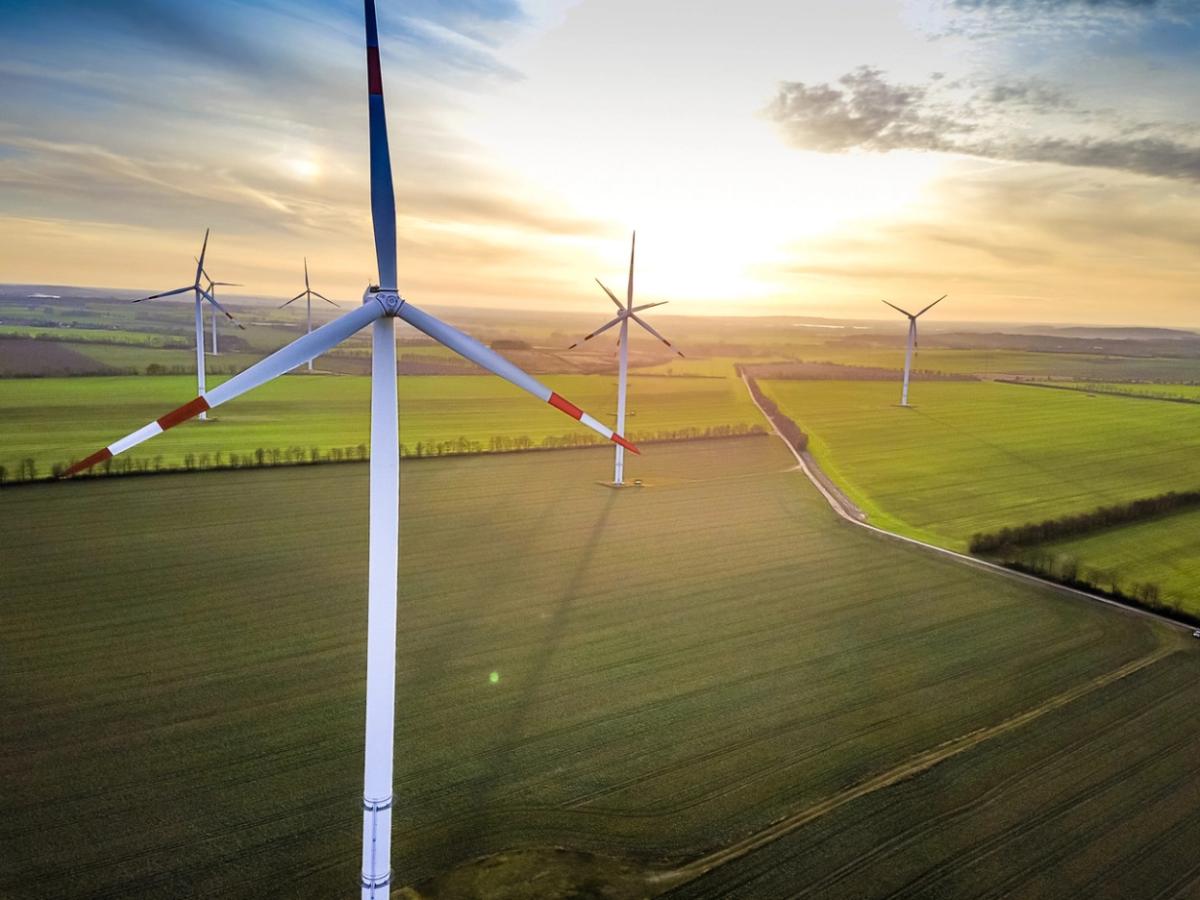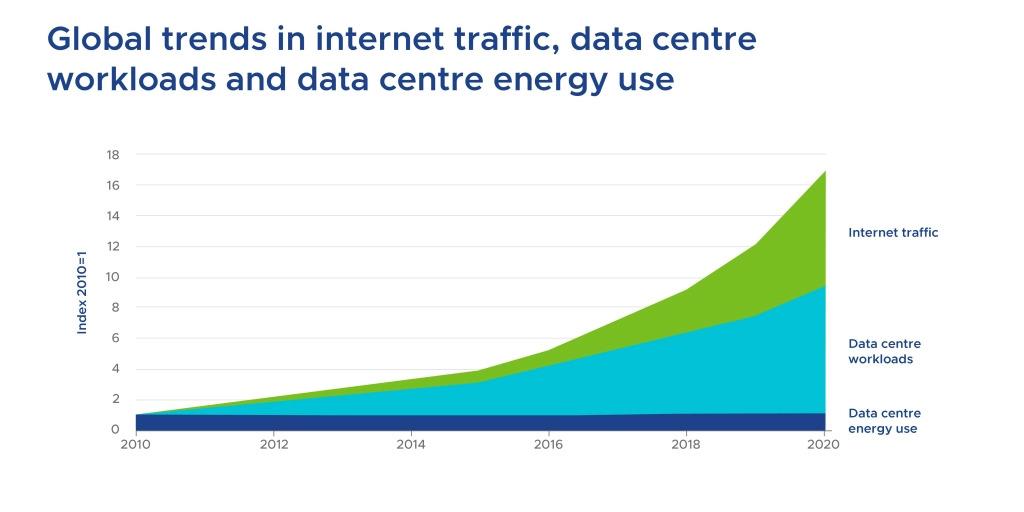Counting the Cost of Carbon: Why IT Efficiency Matters
Published 02-20-23
Submitted by VMware

Climate change is the most pressing global issue of our time, and businesses’ financial costs will become increasingly linked to the impact they have on the environment.
We know that in little more than seven years, we need to halve our emissions to limit the worst effects of climate change. We know good intentions don’t cut it any more.
Our customers, investors, and employees demand urgent action and VMware has a deep commitment to making a difference. We have been a carbon-neutral company since 2018 and sustainability is a core part of our 2030 Agenda.
At the same time, governments and regulators are lifting requirements for greenhouse gas (GHG) emissions reporting, emissions trading markets are developing and carbon taxes are becoming a more regular part of doing business.
According to the World Bank, 68 countries have implemented carbon pricing.
Last year the OECD reported that G20 economies priced 49% of energy-related carbon emissions, compared to 37% in 2018. Korea is showing the way globally, pricing 97% of emissions, and other G20 nations in our region are also playing a leading role, with Japan pricing 79% of emissions, India 58% and China 48%.
Regulation is set to becoming more global. The IMF has proposed an international “floor” carbon price for big emitters. In Europe, the Carbon Border Adjustment Mechanism will require some importers to show the carbon costs paid in the production of goods outside the EU as part of an effort to stop “carbon leakage” of production to countries with less stringent rules.
Globally, the regulations are still evolving, but the direction is unmistakable. Emissions will carry an increasing cost.

Scope 2 emissions that result from their supply chains.
But compliance is complex, with the necessary data living in systems including manufacturing, procurement and logistics platforms, which could operate in on premise data centers, or in a cloud or multi-cloud environment, as well as systems owned by suppliers.
Modern, adaptable multi-cloud IT infrastructure makes this task more manageable.
As businesses become more and more digital, they also need to account for the carbon footprint of the IT infrastructure itself.
Much of the potential cost of that infrastructure, both to the environment and to bottom lines, is in energy consumption. In its Data Centers and Data Transmission Networks report published last year, the International Energy Agency reported that global data center electricity use in 2020 was around 1% of global final electricity demand.
This can vary by market. In Singapore in 2020, during the pandemic, data centre power usage jumped to 7% of total national energy consumption. Yet while global data center use is exploding, the IEA reports that overall data center electricity use has been largely flat since 2010, “owing in part to virtualisation software that enables data center operators to deliver greater work output with fewer servers”.
We’re extremely proud that VMware has been a pioneer in this area, helping companies make their computing infrastructure more efficient since we launched our ESX virtualisation platform (now ESXi) back in 1998.
From 2003 to 2020 our virtualisation solutions enabled customers to collectively avoid using 142 million servers, 2.4 billion megawatts of energy, and 1.2 billion tonnes of GHGs.
But more needs to be done. Technologies such as 5G, artificial intelligence, blockchain and virtual reality all have the potential to significantly increase data center energy consumption in the coming years, adding both to operating and GHG compliance costs.
“Strong government and industry efforts on energy efficiency, renewables procurement and RD&D will be essential to curb energy demand and emissions growth over the next decade,” the IEA says.
Cleaner clouds
As more workloads move into the cloud, it’s vital that decarbonization efforts keep up. Cloud is already efficient from a compute-resources perspective, but the most energy efficient IT process by far is the one you don’t have to run at all. It’s important we reduce IT workload inefficiencies and compute resource wastage. And we want to power workloads from renewable sources wherever possible.
Last year VMware launched the Zero Carbon Committed Initiiative (ZCCI) which backs our vision that by 2030, all VMware public clouds will have zero carbon emissions, through energy-efficient and 100% renewable-energy powered data centers. The program also helps our customers find cloud-provider partners that share these goals.
Our multi-cloud management solutions are also adding carbon reporting and management. For example, the latest update to vRealize includes carbon management capability that counts the carbon-footprint reduction from workload virtualisation, while offering more ways to reduce output, such as tracking down and stopping “zombie” compute processes that keep running when the applications they’re linked to stop.
In our 2022 ESG Report, we announced that we’ve added 30 partners to the program, including Google, Amazon Web Services, Oracle, and IBM.
As part of ZCCI, VMware has also made a commitment that all VMware software will be running on data centers powered by 100% renewable energy by 2030.
Efficient apps
Data center and cloud efficiency is clearly important in addressing carbon footprint, but there is a growing realization that the apps and processes that call on these resources are also designed for optimum efficiency and minimal emissions impact.
In January VMware announced it had become a member of the Green Software Foundation, a non-profit group that advocates for software written and managed in ways that minimize the amount of greenhouse gas emitted as a consequence of its operation.
We’re working on apps that can monitor and report on their own carbon footprint, including downstream emissions caused by their load on data centers and clouds, which can be benchmarkxed against industry standard green KPIs.
Five key strategies for achieving sustainable computing
1. Visualizing energy use and carbon footprint
2. Maximizing productive host utilization
3. Operating energy-efficient IT hardware
4. Designing compute-efficient and carbon-aware applications
5. Powering workloads with renewable energy
Source: Advancing Sustainability Innovation at VMware
Taking action
We work with customers every day to make their operations more efficient. Historically, they’ve been concerned with the direct costs of running the technology. But as governments and regulators begin to impose real costs on activities that affect our climate, and investors demand action, accounting for the cost of GHG emissions is growing in financial importance.
Companies need a clear and accurate picture of the carbon footprint of their operations and this picture must include the impact of the IT resources and processes.
Getting IT operating as efficiently as possible will reduce operating costs and GHG emissions bills. But it is also a genuine, practical step towards emissions reduction and a more sustainable future.
Whatever taxes regulators may impose, the true cost of our failure to become more sustainable is one none of us can afford.
This article may contain hyperlinks to non-VMware websites that are created and maintained by third parties who are solely responsible for the content on such websites.
Click here to view the original content.


